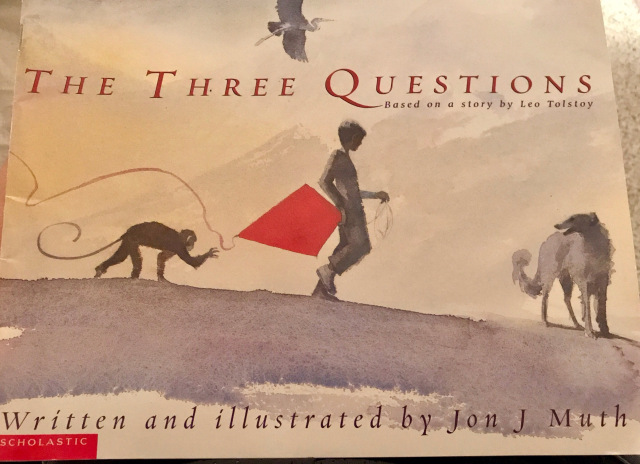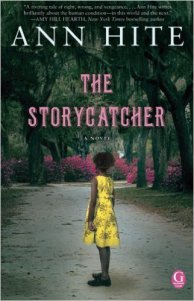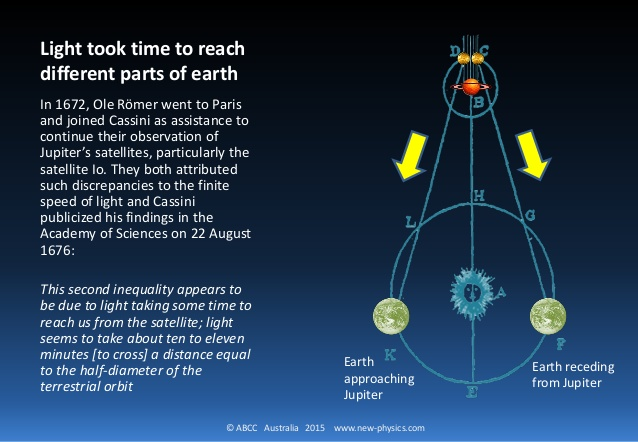According to the Meaning of Liff, ‘Shoeburyness’ is:
the vague uncomfortable feeling you get when sitting on a seat that is still warm from somebody else’s bottom
I think what you need in that situation is either an extremely immersive book to distract you from that vague warmth, or to lean fully into it with something that transforms the feeling from discomfort to a feeling of connection to other humans. Or maybe something that manages to be both.
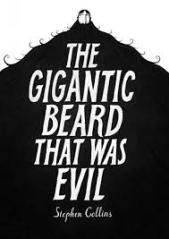 The Gigantic Beard that was Evil by Stephen Collins is a beautiful graphic novel about a man called Dave who lives on an extremely well-ordered island called ‘Here’, with everything beyond Here full of chaos, fear and disorder, called ‘There’. Dave, who is bald apart from one stray hair, one day finds the data he works on scrambled, forming shapes he has only seen in his nightmares of There. His face begins to burn, and a gigantic, ever-growing beard erupts from his chin. It’s a kind of Roald Dahl-esque fairy tale about the the fear of ‘other’ (what is There and not Here), the fear of what cannot be controlled (and how chaos finds a way nonetheless), what it means to be different, and just a beautifully drawn weird and melancholy story. “Beneath the skin of everything is something nobody can know. The job of the skin is to keep it all in and never let anything show”. Read it for connection and to embrace the lack of order and control you have over your bus seat.
The Gigantic Beard that was Evil by Stephen Collins is a beautiful graphic novel about a man called Dave who lives on an extremely well-ordered island called ‘Here’, with everything beyond Here full of chaos, fear and disorder, called ‘There’. Dave, who is bald apart from one stray hair, one day finds the data he works on scrambled, forming shapes he has only seen in his nightmares of There. His face begins to burn, and a gigantic, ever-growing beard erupts from his chin. It’s a kind of Roald Dahl-esque fairy tale about the the fear of ‘other’ (what is There and not Here), the fear of what cannot be controlled (and how chaos finds a way nonetheless), what it means to be different, and just a beautifully drawn weird and melancholy story. “Beneath the skin of everything is something nobody can know. The job of the skin is to keep it all in and never let anything show”. Read it for connection and to embrace the lack of order and control you have over your bus seat.
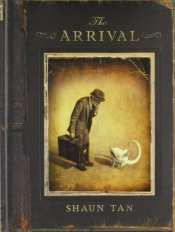 Another great graphic novel for shoeburyness is The Arrival by Shaun Tan, which is basically a book I’d shoe-horn in to any recommendation list. It’s completely wordless, so perfect if reading while travelling makes you queasy, or you’re in a medical waiting room and finding it difficult to concentrate. The illustrations are absolutely stunning, and tell the story of an immigrant arriving in a new city populated by strange creatures, unusual contraptions, and a language of symbols that he doesn’t understand. The man can’t communicate with words so we experience the world as he does – without words. He meets other immigrants, who welcome and help him, and we learn their stories about why they left their homes to make new ones in this city. Read it to connect to others and to escape into the beautiful illustrations.
Another great graphic novel for shoeburyness is The Arrival by Shaun Tan, which is basically a book I’d shoe-horn in to any recommendation list. It’s completely wordless, so perfect if reading while travelling makes you queasy, or you’re in a medical waiting room and finding it difficult to concentrate. The illustrations are absolutely stunning, and tell the story of an immigrant arriving in a new city populated by strange creatures, unusual contraptions, and a language of symbols that he doesn’t understand. The man can’t communicate with words so we experience the world as he does – without words. He meets other immigrants, who welcome and help him, and we learn their stories about why they left their homes to make new ones in this city. Read it to connect to others and to escape into the beautiful illustrations.
 For a different kind of solution, Nagasaki by Eric Faye (trans. by Emily Boyce), is an excellent choice. It’s very short (about 100 pages with very large font) so perfect if you want something you can read all in one go. Shimura, a middle-aged man living alone in a quiet suburb, begins to notice food has been going missing from his kitchen. He sets up a webcam and monitors it from work, hoping to catch the intruder. It’s a quiet, understated, novella about loneliness and disconnect, particularly as you age and particularly if you have no real friends or family around you. It’s almost as if the more Shimura detaches from the world, the more it forces its way in – not to bring connections, but just to highlight that it is there. Read it to transform the shoeburyness from discomfort to a reminder that the world is there.
For a different kind of solution, Nagasaki by Eric Faye (trans. by Emily Boyce), is an excellent choice. It’s very short (about 100 pages with very large font) so perfect if you want something you can read all in one go. Shimura, a middle-aged man living alone in a quiet suburb, begins to notice food has been going missing from his kitchen. He sets up a webcam and monitors it from work, hoping to catch the intruder. It’s a quiet, understated, novella about loneliness and disconnect, particularly as you age and particularly if you have no real friends or family around you. It’s almost as if the more Shimura detaches from the world, the more it forces its way in – not to bring connections, but just to highlight that it is there. Read it to transform the shoeburyness from discomfort to a reminder that the world is there.
 For a longer novel, Life After Life by Kate Atkinson is 600 pages of very readable and engaging writing. This is the story of Ursula’s many lives. You follow her life until she dies, then the story starts again and tiny or radical changes to decisions means her life takes a different course, until she dies again. It’s a bit like Sliding Doors, except rather than being completely separate, each of her lives seems to build on each other and she somehow retains unconscious knowledge of the lives that have come before. Kate Atkinson is incredibly good at writing believable characters, particularly within ‘family saga’ type stories, and this is no exception. Read to transform your shoeburyness into an exciting possibility of the path you have unknowingly chosen.
For a longer novel, Life After Life by Kate Atkinson is 600 pages of very readable and engaging writing. This is the story of Ursula’s many lives. You follow her life until she dies, then the story starts again and tiny or radical changes to decisions means her life takes a different course, until she dies again. It’s a bit like Sliding Doors, except rather than being completely separate, each of her lives seems to build on each other and she somehow retains unconscious knowledge of the lives that have come before. Kate Atkinson is incredibly good at writing believable characters, particularly within ‘family saga’ type stories, and this is no exception. Read to transform your shoeburyness into an exciting possibility of the path you have unknowingly chosen.
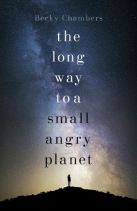 Finally, an excellent shoeburyness read is The Long Way to a Small Angry Planet by Becky Chambers. It’s very easy to read, cosy sci-fi, exploring how people from vastly different cultures and races find ways to interact and work together, as well as issues around gender and sexuality. The writing isn’t the best, with far too much exposition, but it’s written in an episodic way that makes it very easy to pick up and read little bits at a time. It’s very optimistic, especially for sci-fi, as to what the future of human race will look like and how well different species/races accommodate each other. Read it to escape to another world and for the possibilities of human (or alien) connection.
Finally, an excellent shoeburyness read is The Long Way to a Small Angry Planet by Becky Chambers. It’s very easy to read, cosy sci-fi, exploring how people from vastly different cultures and races find ways to interact and work together, as well as issues around gender and sexuality. The writing isn’t the best, with far too much exposition, but it’s written in an episodic way that makes it very easy to pick up and read little bits at a time. It’s very optimistic, especially for sci-fi, as to what the future of human race will look like and how well different species/races accommodate each other. Read it to escape to another world and for the possibilities of human (or alien) connection.
Happy shoeburyness!
Advertisements Share this: